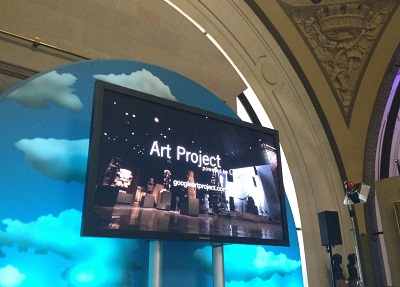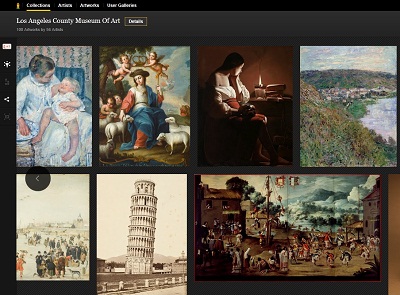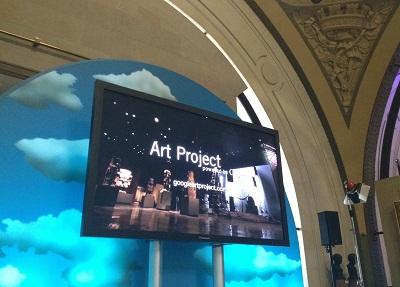In Paris today, representatives from more than 40 countries and 150 institutions, including LACMA, gathered to launch the latest phase of the Google Art Project. The event took place not far from where Camille Pissarro painted this image of a Paris street scene more than one hundred years ago. You’ll find it in the Art Project, along with 99 other highlights from LACMA. (Cool thing: if you select the artist’s name, you arrive at a collection of every work by Pissarro in the Art Project, which places our Pissarro side-by-side with works from Boston, Denver, Jerusalem, Tokyo, and – of course – Paris.)

Launch of the latest phase of the Google Art Project, April 3, 2012, Musée d'Orsay, Paris
In its first phase, the Art Project site already had 20 million visitors, including many educators who tap the site for classroom materials. The expanded site promises to reach exponentially more art enthusiasts. The highlights we’ve added thus far are only the beginning in terms of our ongoing contribution, and we’re pleased to have this new opportunity to introduce the art at LACMA to the world. From our Haniwa horse, representative of sixth century Japan, to Chris Burden’s iconic Urban Light, the works were chosen to give just a sampling of the breadth and depth of what’s on view in our galleries.

Partial screen grab from LACMA's collection on the Google Art Project
The project is just one way that LACMA continues to make our collection available to the broadest possible audience. Last year, we unveiled our free high-res Image Library. And the Google Art Project site anticipates many of the developments we are presently working on for a relaunch of our own collections on lacma.org later this year – for example, just as you can save favorites and add comments on the Art Project site, you’ll soon be able to do so on lacma.org as well.

Launch of the latest phase of the Google Art Project, April 2, 2012, Musée d'Orsay, Paris
The web is an exciting place right now, as developments in information technology make it faster, easier, and more intuitive to share digital material related to our collection, and to enable you to share it with your friends and associates. I was struck today in perusing the Art Project that one can have two very different experiences online – either searching with ease and precision to arrive at a specific and sought-after record of an artwork, or, at the other extreme, browsing as one can do so well on the Art Project site, to see a juxtaposition of disparate works at random.
As I made my way out of the Musée D’Orsay, I saw a thoughtful text panel in a thematic gallery that read, in part: “This display aims to shake up the sacrosanct classifications of art history by bringing together works of art that are, on the face of it, dissimilar. We hope to move outside the framework that determines the way we see art in order to approach it more openly.” The same could be said of these new adventures in online image collections.
Amy Heibel



